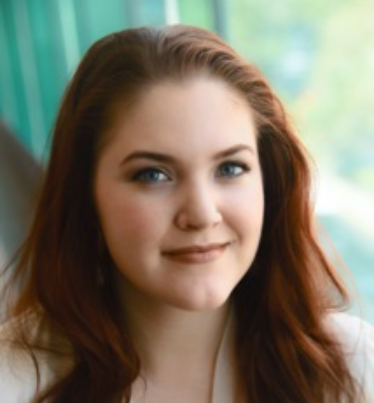Featured Performers for Milhaud's Sacred Service
/On May 5, St. George’s Choral Society will perform Milhaud’s “Sacred Service,” a rarely presented setting of the Jewish liturgy for Saturday morning. This colorful, varied, and poignant work is a masterpiece of the 20th-century sacred repertoire.
The performance will feature:
Elijah Blaisdell
Baritone Elijah Blaisdell performs with ensembles across the country as both a soloist and chorister. An early and new music specialist, his most recent credits include the Adams Fellowship with The Carmel Bach Festival, featured soloist with The Crossing on their Grammy Award-Winning album “Zealot Canticles,” St. Matthew Passion with Bach Society of St. Louis, and Coffee Cantata and Dido and Aeneas with Madison Bach Musicians. Elijah also performs as a chorister and soloist with The Santa Fe Desert Chorale, Grammy-nominated Ensemble True Concord, and the Grammy Award-winning Seraphic Fire. Elijah holds a Master of Music in Vocal Performance from New England Conservatory and after years of training and performing on the East Coast, is now based in Seattle.
Naomi Lewin
Naomi Lewin is the former host of weekday afternoon music on WQXR, and of the podcast Conducting Business. Before that, she was midday host at WGUC in Cincinnati, where she created the award-winning weekly program Classics for Kids, which airs on radio stations across the country. She has produced music programs and arts reports for NPR; intermission features for Metropolitan Opera broadcasts; and podcasts on subjects ranging from the Tippet Rise Art Center, to Martin Luther in Saxony, to the bicentennial of St. George's Choral Society. Naomi is also a speaker, emcee, and media coach, and the radio voice of Arizona Opera.
Given her previous lifetime as a singer and actress, Naomi has continued to appear onstage, narrating Peter and the Wolf, Carnival of the Animals, King David, Façade, A Visit from the White Rabbit, and Four Seasons of Italian Futurist Cuisine by Aaron Jay Kernis. She can be seen as J.S. Bach in the Sunday Baroque 30th Anniversary video, and as a spitball-shooting professor in La Folía, from Filmelodic. Naomi created and hosts a new Classics for Kids Live onstage show. She has given talks on operas from Aida to Zauberflöte.
Naomi was born in Princeton, New Jersey, but received both undergraduate and graduate degrees from Yale.
Paolo Bordignon
Paolo Bordignon is harpsichordist of the New York Philharmonic and performs in 2018-19 with Camerata Pacifica, Orpheus Chamber Orchestra, the Chamber Music Society of Lincoln Center, Santa Fe Chamber Music Festival, St. Paul Chamber Orchestra, New Jersey Symphony Orchestra, ECCO - East Coast Chamber Orchestra, the Florida Orchestra and a Trans-Siberian Arts Festival tour with the Sejong Soloists. He has appeared with the English Chamber Orchestra, American Symphony Orchestra, Lincoln Center's Mostly Mozart Festival Orchestra, and the Knights.
He has collaborated with Sir James Galway, Itzhak Perlman, Reinhard Goebel, Paul Hillier, Bobby McFerrin, Midori, Renée Fleming, and Wynton Marsalis. For the opening of Carnegie Hall’s Zankel Hall, he gave the east coast première of Philip Glass’s Concerto for Harpsichord and Orchestra. Festival appearances include Aspen, Bard, Bay Chamber, Bridgehampton, Jackson Hole, Palm Beach, and Vail. He has appeared on NBC, CBS, PBS, CNN, NPR, the CBC, and on Korean and Japanese national television.
Paolo has worked with composers such as Elliott Carter (performing Double Concerto for Harpsichord and Piano for his 90th birthday celebration), David Conte, Jean Guillou, Stephen Hartke, Christopher Theophanides, and Melinda Wagner. With the Clarion Music Society, he gave the world première of several newly rediscovered chamber works of Felix Mendelssohn.
Paolo has performed organ recitals at venues such as St. Thomas Church Fifth Avenue in New York and St. Eustache in Paris, and he has been a regular organ recitalist at the Metropolitan Museum of Art, including a 10-recital residency in 2010-11. As interim Organist and Choirmaster at St. Bartholomew’s Church in New York, he helps oversee one of the nation’s pre-eminent church music programs.
Born in Toronto of Italian heritage, Paolo attended St. Michael’s Cathedral Choir School before attending the Curtis Institute of Music in Philadelphia. He earned masters and doctoral degrees from the Juilliard School.





















